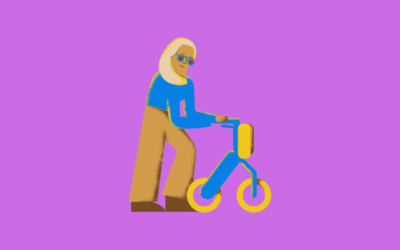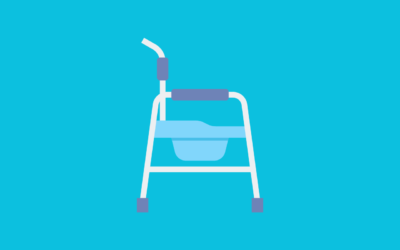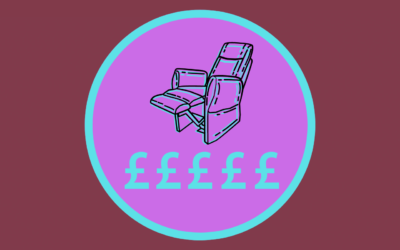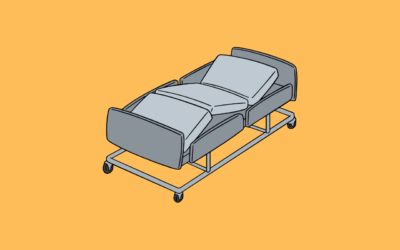Key Takeaways For Mobility Transfer Aids
Diverse Options: Explore a range of mobility transfer aids, from turntables to patient lifts, catering to various needs and preferences.
Enhanced Safety and Independence: Transfer aids, including belts, boards, and lifts, are designed to prioritize safety, offering increased independence for individuals with mobility challenges.
Proper Techniques Matter: Whether transferring from bed to wheelchair or executing a stand-pivot transfer, mastering safe techniques is crucial to ensure the well-being of both the caregiver and the individual in need.
Top Mobility Transfer Aids
We’re glad you stopped by our mobility transfer aids buying guide. Choosing the right assistive equipment can profoundly enhance the quality of life for individuals facing mobility challenges, whether for yourself or a loved one.
As with any product category, mobility transfer aids offer a wide variety of options. Below is a rundown of the many available and some advice on choosing the right one for your needs.
Find the appropriate mobility aid, such as a cane, walker, or wheelchair, to suit your requirements and go about with ease.
What Are Different Mobility Aids?
People with trouble getting on their own might regain some of their freedom using mobility aids. Canes, walkers, crutches, wheelchairs, and scooters are just some of the mobility aids you may buy today.
What Are Transfer Aids?
Any device that facilitates movement from one place to another, such as a bed to a chair or a wheelchair to a car, is considered a transfer aid. The goal of these devices, which may be manually or electrically driven, is to make transferring patients with mobility or cognitive impairments easier and safer for their carers. There is a wide variety of transfer aids, including slide sheets, transfer boards, transfer belts, gait belts, and patient lifts. Using a transfer device may improve a person’s quality of life by making transfers safer for the carer and the person being moved while also increasing the person’s independence and mobility.
Why Are Transfer Aids Used?
A transfer aid might be helpful in a variety of scenarios, including but not limited to the following:
- Assist people with physical or mental limitations who cannot make the shift independently.
- Prioritising everyone’s safety, including the carer and the transferred individual, is essential.
- Improve one’s standard of living by giving one more freedom of movement and choice.
- Help carers move patients about without putting too much strain on them.
- You may avoid caregiver back discomfort by utilising lifting and transferring equipment authorised by a doctor.
- Give people, especially those who are always on the go, more efficient and convenient ways to get where they need to go.
- Caregivers may give their full attention to providing care and comfort to the patient rather than the mechanics of transporting them.
What Is The Name Of The Device Used For Transferring Immobile Patients?
A patient lift is a piece of equipment used to move bedridden people from one location to another. A sling or other lifting apparatus is connected to the boom’s end, supported by a motorised base that may raise and lower the boom. The patient is transferred between facilities by placing them in a sling and using a lift. One may use a patient lift to move a patient from their bed to a chair, from their wheelchair to a bed, or from one position in the same room to another.
How Do You Transfer A Heavy Patient?
Both the patient and the carer need to be protected during a transfer. Hence it would be best if you used the correct lifting techniques. The following are the steps taken.
- Gather the necessary equipment, such as a gait belt, transfer board, or powered lift.
- Take a step back to a safe distance from the patient but close enough to reach the person easily.
- Have the patient stand with a gait belt around their waist, head, and upper body above the bed or chair height.
- Place one hand on the patient’s shoulder and the other on the gait belt, and lift them up and toward you.
- Position the patient on the transfer board, motorised lift, or gait belt to help them walk.
- As you move the patient, keep them close to you and use a smooth, continuous motion.
It is essential to have help when transferring a patient, particularly if the patient is extremely large or heavy. Using safe lifting techniques protects both the carer and the person receiving care.
How Do You Transfer A Bedridden Patient?
To properly move a bedridden patient, you must take the following steps:
Gather the equipment, such as a sliding sheet, transfer board, or lift device. Depending on the specifics, additional equipment, like a gait belt, may be necessary to help with the transition.
- You and the patient should be on the same page about the transfer before you begin the process.
- To achieve maximum comfort for the patient, make sure the patient is relaxed before beginning the transfer. As a possible option, place the patient at the foot of the bed or the edge of the chair.
- Give aid by a transfer board; you may use a slide sheet or lift device to assist the patient in changing positions. There are times when an extra pair of hands is needed during a move.
- Please do the following to put the sufferer at ease: As soon as the patient has arrived at their new site, it is imperative that they feel secure and comfortable. You should examine the patient’s posture and make any required adjustments if they are uncomfortable.
It would be best if you prioritised the patient’s and the carer’s health during the transfer of a bedridden patient. Therefore, you should follow standard safety protocols and master safe transfer techniques before attempting to move a bedridden patient.
How Do I Transfer My Immobile Patient From Bed To Wheelchair?
When transferring a patient from bed to a wheelchair, follow these steps:
- Gather the equipment, such as a sliding sheet, transfer board, or lift device. Depending on the specifics, additional equipment, like a gait belt, may be required to help with the transition.
- Plan the relocation: Before starting the transfer, ensure you and the patient are on the same page.
- To achieve maximum comfort for the patient, make sure the patient is in a relaxed state before beginning the transfer. As a possible option, place them at the foot of the bed or the edge of the chair.
Moving a patient who cannot move independently requires strict adherence to all relevant safety measures to prevent injury to the patient or others. You should learn proper transfer methods before attempting to relocate a patient who cannot move independently.
What Are The Four Types Of Wheelchair Transfers?
There are four main types of wheelchair transfers:
- There is no need for a full transfer (independent transfer) of the patient from the wheelchair to the bed or other medical equipment.
- A stand-pivot transfer involves the patient standing up with the assistance of a carer and then pivoting around to face the wheelchair.
- A slide-board transfer involves sliding the patient from a bed or chair onto a transfer board and subsequently onto a wheelchair.
- Transferring from a bed or chair to a wheelchair is made easier with a lift.
You must choose the appropriate transfer method based on the patient’s mobility and cooperation throughout the process. Wheelchair transfers may be difficult and dangerous if the right protocols are not followed.
Top Mobility Transfer Aids
Explore More Mobility Transfer Aids for Ease and Safety
- Best Transfer Boards – Discover transfer boards that help safely move individuals between surfaces like chairs, beds, or wheelchairs.
- Best Stand Assist Aids – Learn about stand assist aids designed to help users transition safely from sitting to standing.
- Best Wheelchair Accessories – Find accessories that enhance the comfort and functionality of your wheelchair during transfers.
- Best Bed Rails – Explore bed rails that provide stability and support when transferring in and out of bed.












